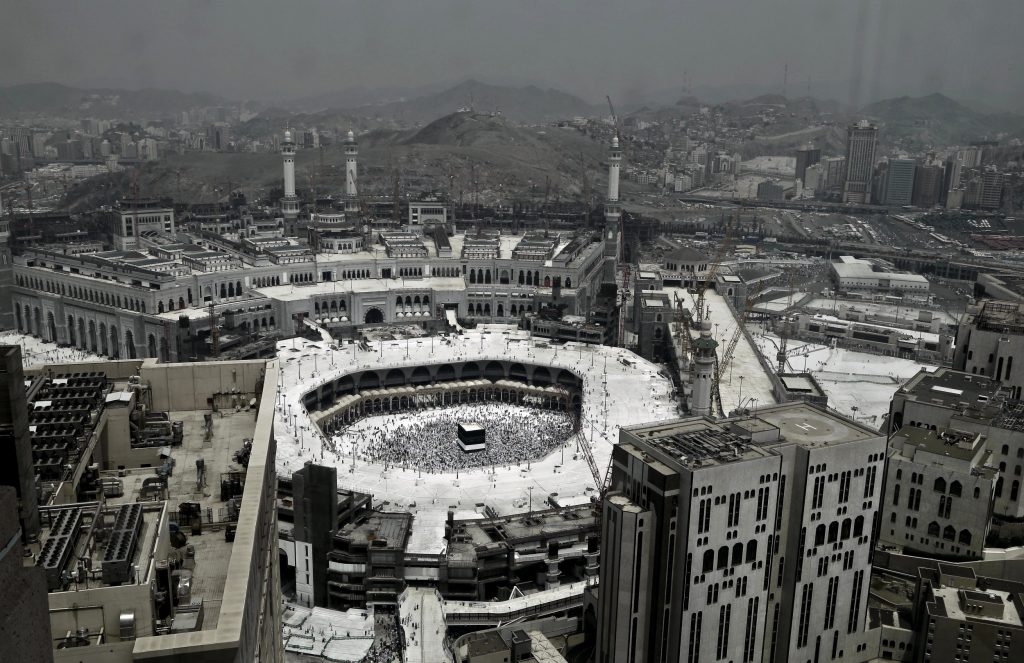The holy city of Mecca, a cornerstone of the Islamic faith, experienced significant flooding on Monday following torrential rains brought on by a powerful storm that swept across Saudi Arabia. The unexpected deluge, which also impacted other cities including Medina and Jeddah, inundated streets, submerged vehicles, and caused widespread disruption. Saudi Arabia’s National Center for Meteorology (NCM) issued red alerts for several regions, including Mecca, forecasting continued rainfall. This unprecedented weather event underscores the changing climate patterns affecting even traditionally arid regions like Saudi Arabia.
The flooding in Mecca holds particular significance due to the city’s unique climatic conditions. Situated in a hot desert environment, Mecca typically receives minimal rainfall. This recent deluge highlights a stark departure from the norm and raises concerns about the increasing frequency and intensity of extreme weather events, potentially linked to climate change. Scientists had previously projected rising temperatures in Mecca, posing challenges for pilgrims undertaking the Hajj and Umrah pilgrimages. This unexpected flooding introduces a new dimension to the climate-related challenges facing the city and the millions who journey there annually.
The widespread impact of the storm is evident in the numerous photos and videos circulating on social media, depicting inundated streets and submerged vehicles in Mecca, Medina, and Jeddah. Medina recorded the highest rainfall at 49.2 millimeters, followed by Jeddah with 38 millimeters. The NCM spokesman, Hussein al-Qahtani, via social media platform X, confirmed the ongoing rainy season, predicted to last until Wednesday, and its projected trajectory across various regions of Saudi Arabia. He emphasized the importance of adhering to official warnings and instructions from relevant authorities.
Mecca, home to the Grand Mosque, the largest mosque in the world, and Medina, site of the Prophet’s Mosque, the second holiest site in Islam, attract millions of pilgrims annually. The Umrah pilgrimage continues throughout the year, culminating in the Hajj pilgrimage during the final month of the Islamic calendar. This influx of pilgrims underscores the potential impact of these extreme weather events on religious observances and the logistical complexities involved in managing large crowds under such challenging conditions. The flooding serves as a stark reminder of the vulnerability of even sacred sites to the forces of nature and the increasing need for preparedness and adaptation in the face of a changing climate.
This isn’t the first instance of heavy rainfall impacting Mecca and other Saudi Arabian cities. In August 2023, Mecca experienced significant flooding that led to school closures and widespread disruption. Jeddah has also faced devastating floods in the past, notably in 2009, which resulted in over 100 fatalities. Medina, too, experienced deadly flooding during the Hajj pilgrimage in 2005, claiming the lives of 29 people. These past events highlight the recurring nature of flooding in the region and the urgent need for effective mitigation strategies.
The NCM has actively communicated updates on the rainfall situation, providing specific rainfall measurements and urging the public to follow official reports and heed warnings from authorities. Al-Qahtani detailed the rainfall totals recorded in various districts, highlighting the significant precipitation experienced across the region. While the immediate focus remains on managing the current crisis, the long-term implications of these extreme weather events necessitate a comprehensive assessment of the potential damage to infrastructure and the development of strategies to ensure the safety and well-being of pilgrims in the future. The frequency and intensity of these events raise crucial questions about the future of pilgrimages to these holy cities and the measures required to adapt to a changing climate.










